“History is a living whole. If one organ be removed, it is nothing but a lifeless mass.”
~Frederic Harrison

1841 – President John Tyler vetoed a bill which called for the re-establishment of the Second Bank of the United States. Enraged Whig Party members rioted outside the White House in the most violent demonstration on White House grounds in U.S. history.
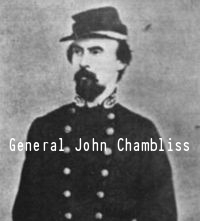
1864 – Confederate General John Chambliss was killed during a cavalry charge at the Second Battle of Deep Bottom in Virginia, one of the sieges of Petersburg. His death led to a surprising discovery by Union forces.
Chambliss’ body was recovered by Union General David Gregg, who found a detailed map of the Richmond defenses. Gregg gave the plan to Union topographical engineers, who then looked for a way to copy and distribute the map through the army’s command structure. Using a new photographic technique known as Margedant’s Quick Method, which did not require a camera, the engineers traced the map and laid it over a sheet of photographic paper. The paper was then exposed to the sun’s rays, which darkened the paper except under the traced lines.
The result was a mass-produced negative of the map, which was distributed to all Union officers in the area within 48 hours. The discovery did not help the Union capture Richmond – that would take another seven months – but it may have reduced casualties by preventing foolhardy attacks on well-defended positions.
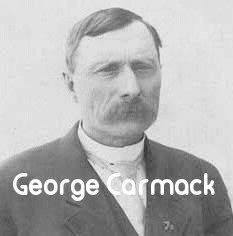
1896 – While salmon fishing near the Klondike River in Canada’s Yukon Territory, George Carmack spotted nuggets of gold in a creek bed. His discovery sparked the last great gold rush in the American West.
Carmack and two companions staked their claim the following day. News of the gold strike spread fast across Canada and the United States, and over the next two years, as many as 50,000 would-be miners arrived in the region. Rabbit Creek was renamed Bonanza, and even more gold was discovered in another Klondike tributary, dubbed Eldorado.
“Klondike Fever” reached its height in the United States in mid-July 1897 when two steamships arrived from the Yukon in San Francisco and Seattle, bringing a total of more than two tons of gold. For his part, Carmack left the Yukon with $1 million worth of gold. Many individual gold miners in the Klondike eventually sold their stakes to mining companies, who had the resources and machinery to access more gold. Large-scale mining in the Yukon Territory didn’t end until 1966, and by that time the region had yielded some $250 million in gold. Today, some 200 small gold mines still operate in the region.

1920 – Cleveland Indians shortstop Ray Chapman was struck in the temple by a ball pitched by Carl Mays of the New York Yankees. Despite a late-night operation to relieve the pressure on his brain, Chapman was pronounced dead at 12:30 a.m. the next day. It was the first and only death to occur as the result of a pitched ball in major league history.
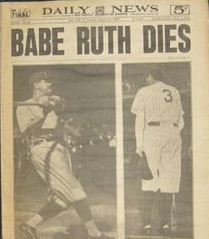
1948 – Baseball legend George Herman “Babe” Ruth died from cancer in New York City. At a time when baseball was suffering through the disgrace of the Black Sox scandal, the “Sultan of Swat” had salvaged the sport’s popularity, hitting a record 60 home runs in the 1927 season and leading the Yankees to seven pennants. Yankee Stadium, opened in 1923, came to be known as “the House that Ruth Built.”
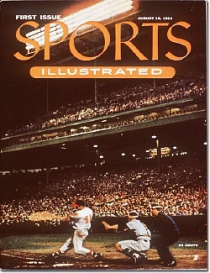
1954 – The first issue of Sports Illustrated was published by Time Inc. Initially, the magazine was not profitable (and would not be so for 12 years) because much of the subject matter was directed at upper class activities such as yachting, polo and safaris.
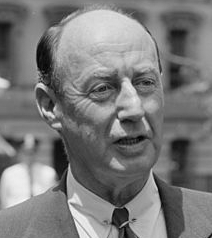
1956 – Adlai E. Stevenson was nominated for president at the Democratic National Convention in Chicago. The former governor of Illinois had been soundly defeated by Republican Dwight Eisenhower in 1952 and the campaign of 1956 would be no different. Eisenhower won 41 of the 48 states.
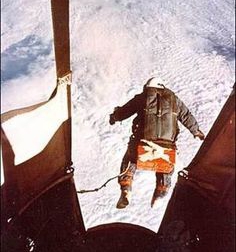
1960 – Joseph Kittinger parachuted from a balloon over New Mexico at 102,800 feet, setting three records that held until 2012: High-altitude jump, free fall, and highest speed by a human without an aircraft.

1977 – Music icon Elvis Presley died in Memphis, Tennessee. The “King of Rock N’ Roll” was 42. Presley is an inductee in seventeen Halls of Fame, including the Rock and Roll Hall of Fame, Country Music Hall of Fame, Rockabilly Hall of Fame, and Gospel Hall of Fame. With record sales of over 600 million, Elvis remains the best-selling single artist of all time.
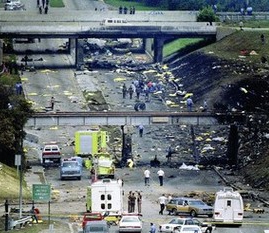
1987 – A plane crash at Detroit Metropolitan Airport in Michigan killed 156 people. A four-year-old girl was the sole survivor of the accident, which was caused by pilot error.
Northwest Flight 255 was headed to California with a stopover in Phoenix when it pulled away from the gate in Detroit. While the DC-9 Super 82 taxied out to the runway, the pilot and co-pilot failed to conduct their pre-flight checks according to procedure and, as a result, the takeoff-warning system was never turned on. Later, there was speculation that the pilots may have been rushing the checks to avoid incoming bad weather.
A lack of communication between the pilot and co-pilot turned into a deadly mistake when neither extended the wing flaps prior to takeoff. As the plane rushed down the 6,800-foot runway, it lifted only 40 feet off the ground when it should already have been 600 feet in the air. At the end of the runway, the plane hit lampposts and a rental-car office. The plane then crashed onto a road a half of a mile away. On the Interstate 94 Bridge in Romulus, the plane hit a car and killed both people in the vehicle.

2000 – Delegates to the Democratic National Convention in Los Angeles nominated Vice President Al Gore for president. In what was one of the closest presidential races in history, Gore would win the popular vote but lose in the Electoral College to Republican George W. Bush. A controversial election dispute over a vote recount in Florida was settled by the U.S. Supreme Court, which ruled 5–4 in favor of Bush.
Compiled by Ray Lemire ©2016 RayLemire.com. All Rights Reserved.
You may not reproduce, record, publish, republish, post, transmit, publicly display, publicly exhibit or distribute any articles or photographs on RayLemire.com without obtaining the express written consent of the Operator.